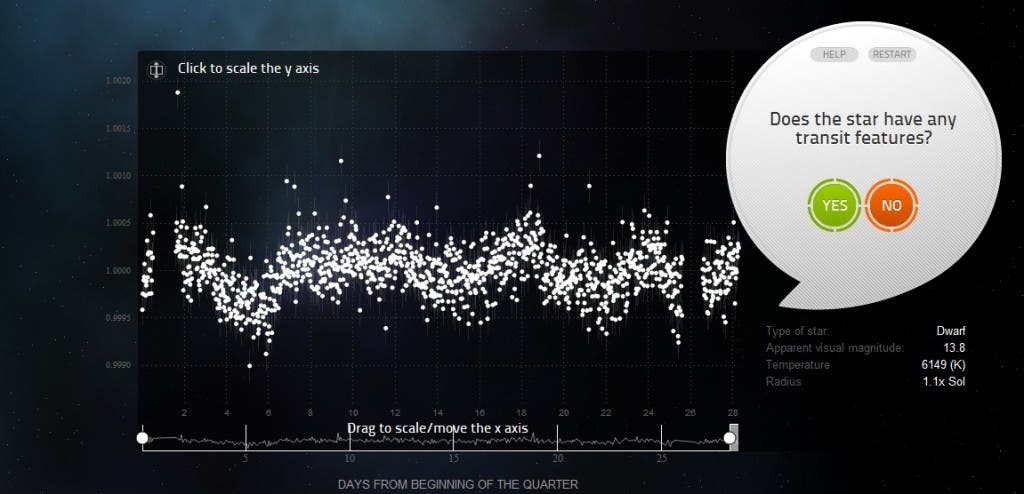This news couldn’t have come any sooner. It was just last week that we reported how gamers made a monumental breakthrough by helping solve a decade old problem in less than ten days in a fantastic collective effort via an online game, leading to significant advances to AIDS treatment research. Now, NASA has confirmed two new exoplanets found by amateur virtual astronomers playing a game in which they had to spot earth-like worlds orbiting distant stars.
For the past two years, each 30 seconds the Kepler Space Observatory photographs a patch of sky between the constellations Cygnus and Lyra. The volume of information fed back to astronomers is immense, and although precission modeled algorithms do a good job at spotting distant Jupiter-sized planets far away from our solar system, it’s terrible at detecting smaller, Earth-sized, planets which have a better chance at harboring extraterrestrial life. For this kind of work, you need the human brain and its unique patterning abilities.
RELATED: Planet orbiting around two suns found by Kepler
So it has it that a while ago physicists at Oxford University set up Planethunters.org, a website where people, with or without astronomical training, could sift through the Kepler data on thousands of individual stars and submit likely candidates for hidden planets. The compelling prospect of being able to actively contribute to some of mankind’s greatest discoveries, coupled with the website’s entertaining, gaming-like interface made the project a big hit, as drawn from the recent report issued by Planet Hunters.
“Planet Hunters is a new citizen science project, designed to engage the public in an exoplanet search using NASA Kepler public release data. In the first month after launch, users identified two new planet candidates which survived our checks for false-positives,” the report said.
Planet Hunter has registered over 40,000 members since it went live in 2009. In 4 million games the players have discovered 69 possible planets – two of those have now been found to meet the space agency’s stringent criteria and have been officially confirmed as candidate planets. One of the new planets is just two and a half times the size of the earth, with a confirmed solid surface. The second is a gas giant more like Jupiter and orbits its parent star every 50 days, far off from any chances of harboring life, unlike the first planet.
“These are planets that had slipped through our fingers” says Oxford University’s Dr Chris Lintott, “they had escaped our automatic detection methods, and they’ve been rescued by the heroic efforts of the people who visited our website.”
Naturally, the list of authors will include the name of the amateur astronomer who first spotted it, so even though you might have failed your high school physics class once or twice, you can still get the chance to leave your mark in the science field.










